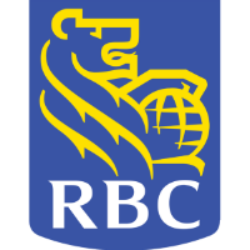

GitLab Inc.
Country Risk Analysis
US · Macroeconomic Factors/Risks · ForecastsGitLab Inc. mainly operates in US (Alpha-2: US, Alpha-3: USA)
B
19
B
16
B+
3
Indicator Sources: World Bank/OECD/FRED/Manual
Annual frequency, except specifiedRating
No Data
Inapplicable
Equity Risk Premium
The Equity Risk Premium (ERP) represents the additional return that investors require for taking on the risk of investing in equities over risk-free assets, such as government bonds. It reflects the compensation investors expect for the uncertainty and volatility associated with stock market investments. The ERP is a critical component in determining the cost of equity in valuation models and assessing investment opportunities.Jan. 5, 2024:
?
Data is too context dependant
Data wont be considered for overall rating
Adj. Default Spread
The adjusted default spread is calculated by taking the sovereign CDS spread and adjusting it for factors like the country’s credit rating and macroeconomic conditions. This adjusted spread reflects the risk premium specific to the sovereign debt, providing a more accurate measure of the default risk. It helps in estimating the additional return required by investors for holding that sovereign debt relative to a risk-free benchmark.No Data
Inapplicable
Corporate Tax Rate
The corporate tax rate is the percentage of a company’s profits that must be paid in taxes to the government. It impacts financial decisions by affecting the cost of debt and overall cost of capital through tax shields on interest expenses. Understanding the corporate tax rate is essential for accurately evaluating a company’s profitability and financial health in valuation models.Jan. 5, 2024:
F-
Above average; Poor business environment?
Sovereign CDS Spread
The Sovereign CDS Spread is calculated by comparing the CDS spread of a sovereign bond to a risk-free rate, such as the yield on government bonds from a highly rated country. The CDS spread represents the risk premium for default, with higher spreads indicating higher perceived risk. Adjustments for credit ratings may be made to estimate the sovereign’s default probability and overall credit risk.Jan. 5, 2024:
A+
Below average
Foreign Direct Investments (FDIs) · OECD
Inflow-to-Outflow Ratio - A/L
The FDI inflow-outflow ratio (Asset/Liability Principle) measures the balance of foreign direct investment inflows and outflows for a country, using currency-converted values (quoted in USD) across all sectors. Unlike the Directional Principle, which focuses on the flow direction of investments, the Asset/Liability Principle classifies FDI based on the ownership of assets and liabilities. This ratio helps track changes in financial relationships and assess economic stability, aiding in strategic policy and investment decisions.F+
No estimates data
All time low within last 10 years
All time low within last 3 years
Inflow-to-Outflow Ratio - Directional
The FDI inflow-outflow ratio (Directional Principle) measures the balance of foreign direct investment inflows and outflows for a country. This ratio is calculated using currency-converted values (quoted in USD) for all types of foreign direct investments across all sectors. By tracking this ratio over time, investors can gain valuable insights into a country's investment climate, its relative attractiveness compared to other markets, and potential shifts in economic stability and growth prospects.B
No estimates data
Highest result within the past 10 years
Highest result within the past 3 years
Net FDI Inflows
Net FDI Inflows refer to the total amount of foreign direct investments entering a country, measured in USD, while applying the Directional Principle.E+
No estimates data
Missed 10 years high by 0.38%
Missed 3 years high by 0.38%
Net FDI Outflows
Net FDI Outflows measure the total amount of FDI leaving a country, measured in USD, while applying the Directional Principle.C
Decrease is bad, increase good
YoY increase is significant high and beneficial
Significant above average
No estimates data
Missed 10 years high by 4.16%
Missed 3 years high by 4.16%
Net Assets
Net Assets measure the cumulative amount of FDIs in the country, reflecting the aggregate value of assets owned by foreign investors within the country.C
Decrease is bad, increase good
YoY increase is significant high and beneficial
Significant above average
No estimates data
Missed 10 years high by 2.22%
Missed 3 years high by 2.22%
Net Liabilities
Net Liabilities represent the total value of foreign direct investments by a country’s investors abroad minus the investments by foreign investors in the country. It indicates the net financial obligations a country has to foreign investors.E+
No estimates data
Missed 10 years high by 1.59%
Missed 3 years high by 1.59%
Interest Rates · OECD
Short-Term
Short-term interest rates are the rates charged on loans or paid on deposits with maturities of one year or less. They are influenced by central bank policies and market conditions and play a crucial role in determining the cost of borrowing and the return on savings. Short-term interest rates impact economic activity by influencing consumer spending, business investments, and overall financial market stability.?
Data is too context dependant
Data wont be considered for overall rating
Immediate, Call Money, Interbank Rates
Immediate interest rates refer to the current rates at which borrowing and lending occur, influencing the cost of short-term financing. Call money rates are the interest rates for very short-term loans between banks, typically overnight, and are a key indicator of liquidity in the financial system. Interbank rates are the average interest rates at which banks lend to each other, reflecting the broader cost of short-term borrowing and overall market conditions.?
Data is too context dependant
Data wont be considered for overall rating
Long-Term
Long-term interest rates are the rates on loans or investments with maturities extending beyond one year, such as bonds or mortgages. They are influenced by expectations about future inflation, economic growth, and monetary policy. Long-term interest rates affect borrowing costs for long-term investments and are a key factor in determining the overall cost of capital and investment decisions for businesses and governments.?
Data is too context dependant
Data wont be considered for overall rating
Government · OECD
Government Debt/GDP
This ratio indicates the scale of a country's debt in relation to its economic output and helps assess its ability to manage and service debt. A high ratio may signal potential financial instability or increased borrowing costs, while a lower ratio suggests a more manageable level of debt.F-
Increase is bad, decrease good.
YoY increase is detrimental and drastic
Significant above average
No estimates data
Missed 10 years low by 17.72%
Missed 3 years low by 2.23%
Government Spending/GDP
This ratio provides insight into the size of the government’s role in the economy and its impact on economic activity. High levels of government spending relative to GDP may indicate robust public investment or social programs, while lower levels suggest a more restrained fiscal approach.B+
Increase is bad, decrease good.
YoY decrease is significant high and beneficial
Significant below average
No estimates data
Missed 10 years low by 3.17%
Lowest result within the past 3 years
Trust In Government
This ratio provides insight into the size of the government’s role in the economy and its impact on economic activity. High levels of government spending relative to GDP may indicate robust public investment or social programs, while lower levels suggest a more restrained fiscal approach.US published nothing for this dataset. The Trust In Government won't be considered during overall country analysis rating.
Inapplicable
Enterprise Landscape · OECD
Business Confidence Index (BCI), Monthly
The Business Confidence Index (BCI) measures the optimism or pessimism of business leaders regarding the economic environment and future business conditions. It gauges expectations about economic performance, market demand, and investment prospects. A high BCI indicates strong business confidence and a positive outlook for economic growth, while a low BCI suggests caution and potential concerns about the economic climate.F-
Decrease is bad, increase good
Significant below average
No estimates data
All time low within last 10 months
All time low within last 3 months
Enterprise Bankruptcies
Enterprise bankruptcies refer to the legal process by which companies unable to meet their financial obligations seek relief from debts and liabilities, often resulting in restructuring or liquidation. The number and rate of bankruptcies are key indicators of economic health and business environment stability. A rise in enterprise bankruptcies can signal economic distress or financial difficulties within the business sector, while a decline may suggest improved economic conditions and business resilience.US published nothing for this dataset. The Enterprise Bankruptcies won't be considered during overall country analysis rating.
Inapplicable
Enterprise Entries
Enterprise entries refer to the number of new businesses or startups that are registered and begin operations within a specific period. This metric provides insight into the entrepreneurial activity and economic dynamism of a region or country. A high number of enterprise entries can indicate a healthy, growing economy with favorable conditions for business formation, while a low number might suggest economic challenges or barriers to entry.US published nothing for this dataset. The Enterprise Entries won't be considered during overall country analysis rating.
Inapplicable
Social · OECD· World Bank
Population
A++
Decrease is bad, increase good
YoY increase is significant high and beneficial
Significant above average
No estimates data
Highest result within the past 10 years
Highest result within the past 3 years
Poverty Rate Based On Disposable Income
The Business Confidence Index (BCI) measures the optimism or pessimism of business leaders regarding the economic environment and future business conditions. It gauges expectations about economic performance, market demand, and investment prospects. A high BCI indicates strong business confidence and a positive outlook for economic growth, while a low BCI suggests caution and potential concerns about the economic climate.F-
Increase is bad, decrease good.
YoY increase is detrimental and drastic
Significant above average
No estimates data
All time high within last 3 years
PTR For Families Claiming Min. Benefits
The Business Confidence Index (BCI) measures the optimism or pessimism of business leaders regarding the economic environment and future business conditions. It gauges expectations about economic performance, market demand, and investment prospects. A high BCI indicates strong business confidence and a positive outlook for economic growth, while a low BCI suggests caution and potential concerns about the economic climate.US published nothing for this dataset. The PTR For Families Claiming Min. Benefits won't be considered during overall country analysis rating.
Inapplicable
Economy · OECD
Gross Domestic Product (GDP)
The Business Confidence Index (BCI) measures the optimism or pessimism of business leaders regarding the economic environment and future business conditions. It gauges expectations about economic performance, market demand, and investment prospects. A high BCI indicates strong business confidence and a positive outlook for economic growth, while a low BCI suggests caution and potential concerns about the economic climate.US published nothing for this dataset. The Gross Domestic Product (GDP) won't be considered during overall country analysis rating.
Inapplicable
CPI Growth (Inflation)
The Business Confidence Index (BCI) measures the optimism or pessimism of business leaders regarding the economic environment and future business conditions. It gauges expectations about economic performance, market demand, and investment prospects. A high BCI indicates strong business confidence and a positive outlook for economic growth, while a low BCI suggests caution and potential concerns about the economic climate.B+
Increase is bad, decrease good.
YoY decrease is significant high and beneficial
Significant below average
No estimates data
Missed 10 years low by 3370.74%
Lowest result within the past 3 years
Long-Term Unemployment Rate
The Business Confidence Index (BCI) measures the optimism or pessimism of business leaders regarding the economic environment and future business conditions. It gauges expectations about economic performance, market demand, and investment prospects. A high BCI indicates strong business confidence and a positive outlook for economic growth, while a low BCI suggests caution and potential concerns about the economic climate.F+
No estimates data
All time low within last 10 years
All time low within last 3 years
Unemployment Rate, Monthly
The Business Confidence Index (BCI) measures the optimism or pessimism of business leaders regarding the economic environment and future business conditions. It gauges expectations about economic performance, market demand, and investment prospects. A high BCI indicates strong business confidence and a positive outlook for economic growth, while a low BCI suggests caution and potential concerns about the economic climate.C
Increase is bad, decrease good.





